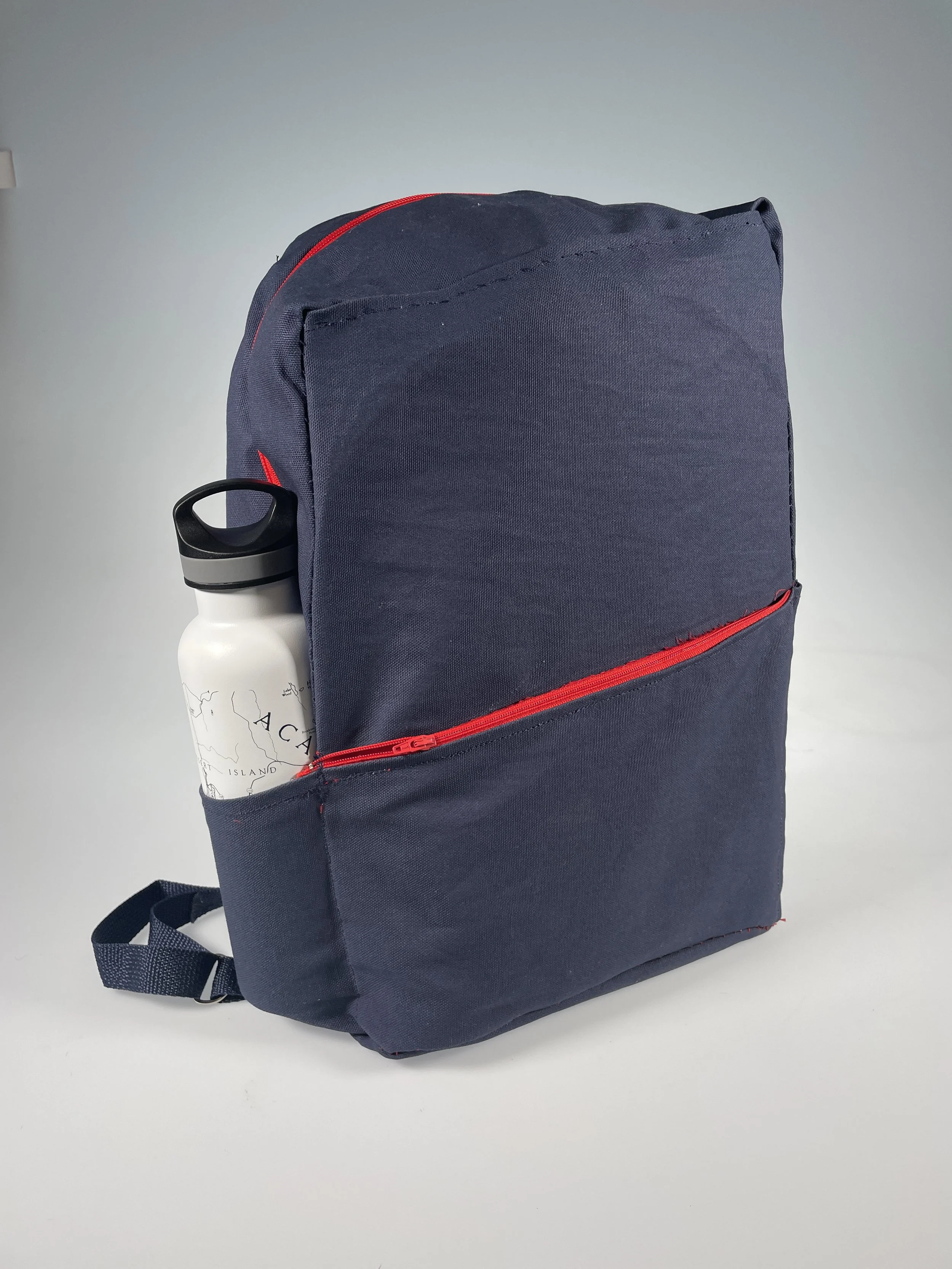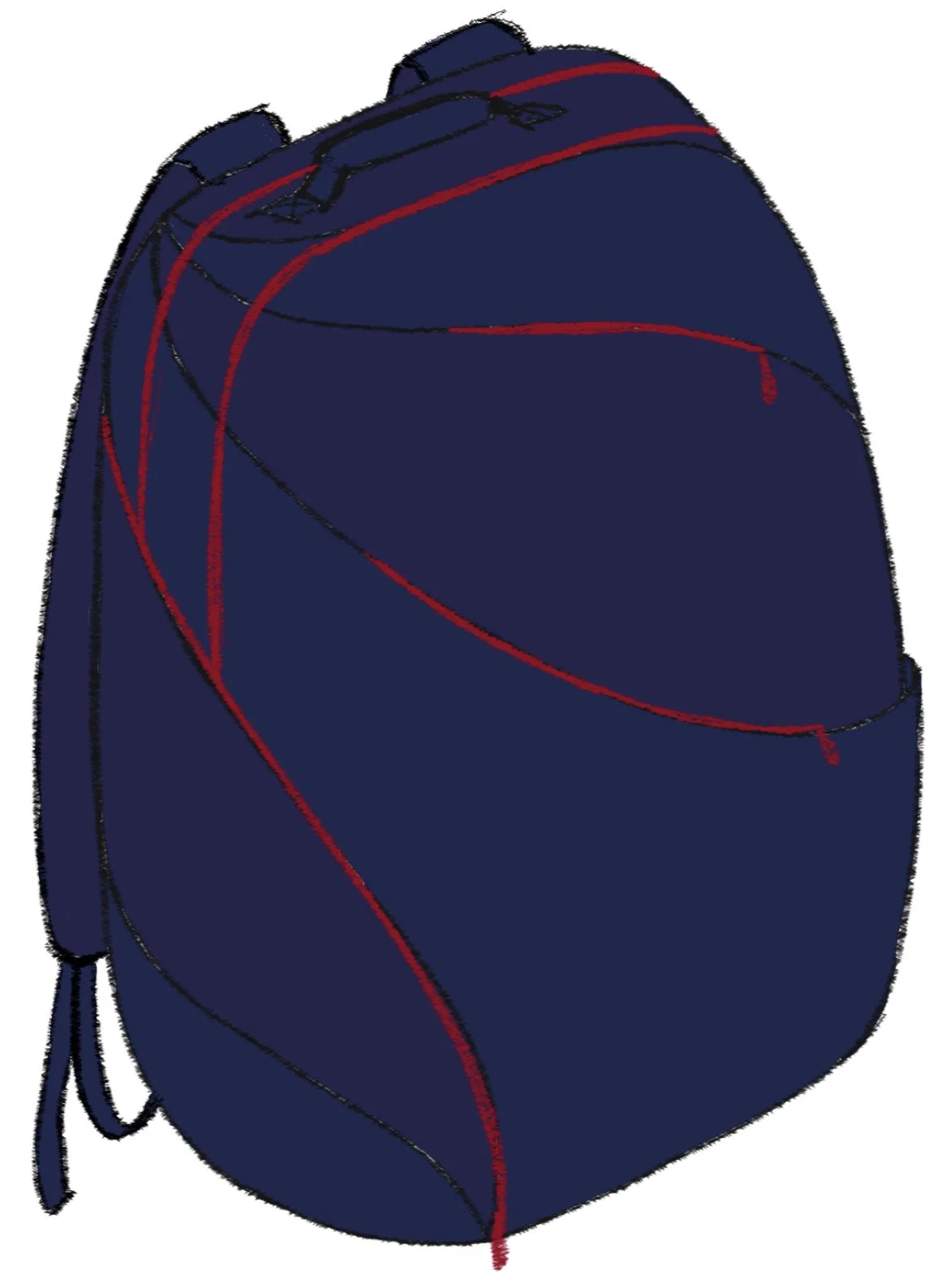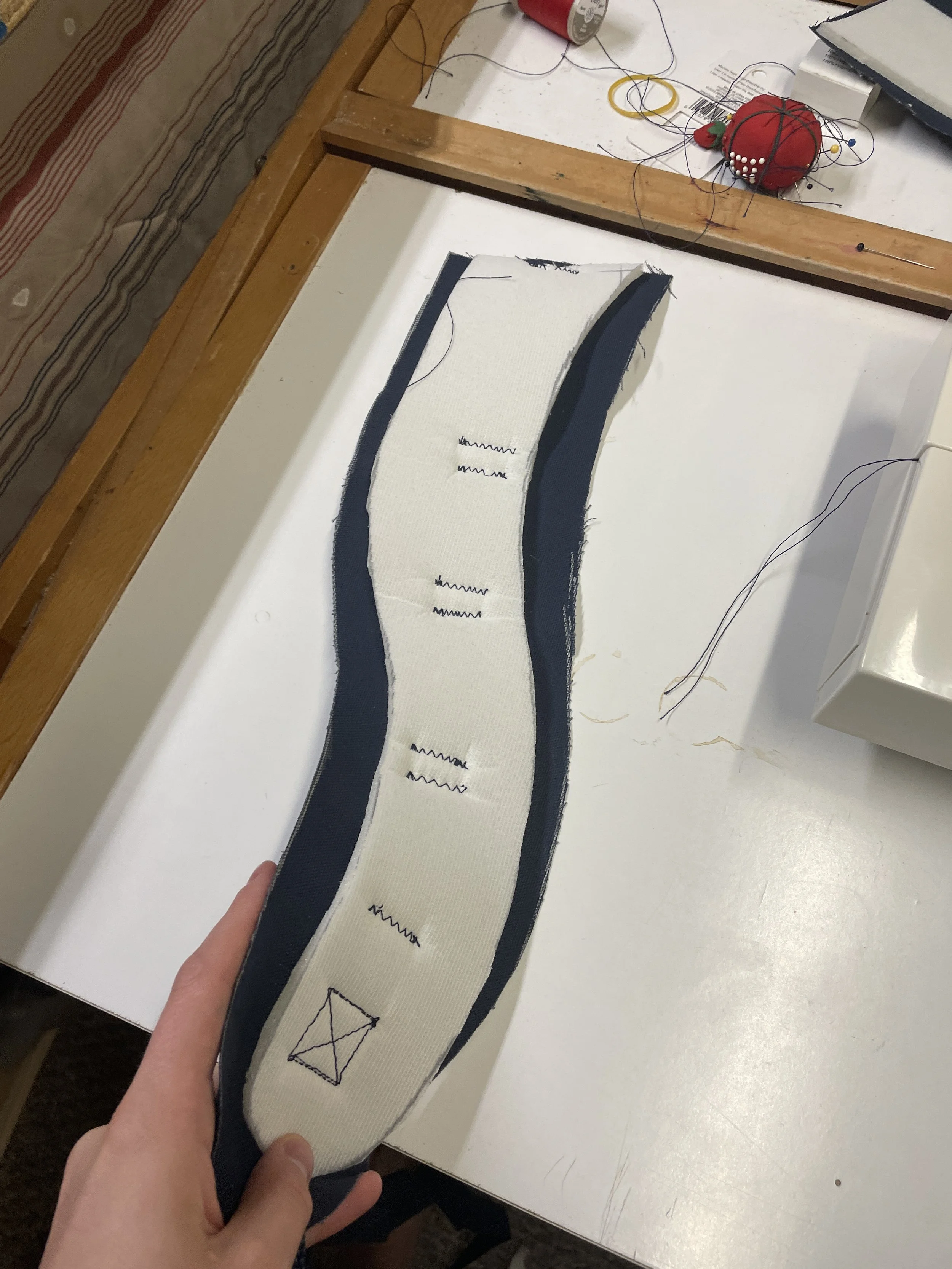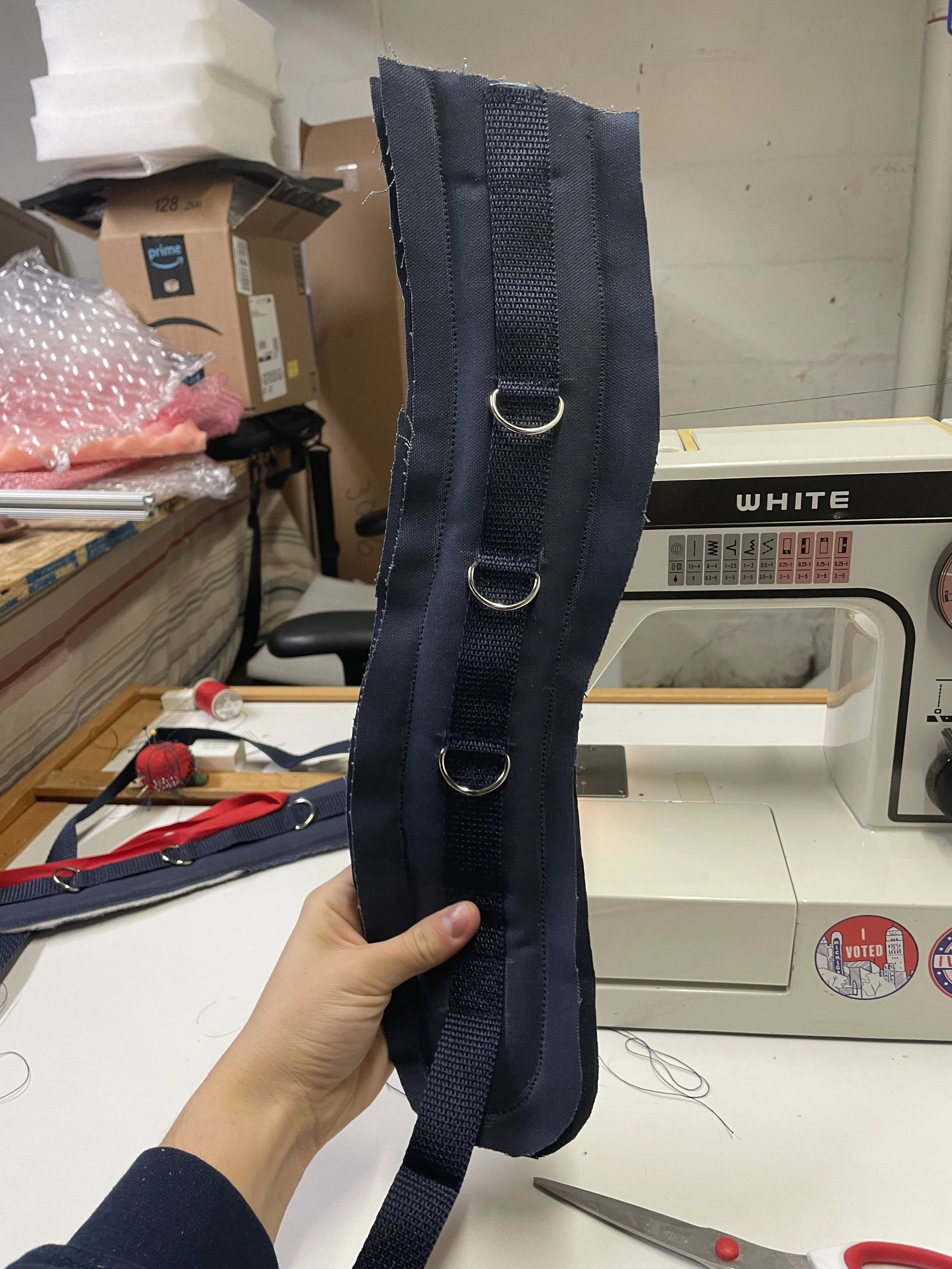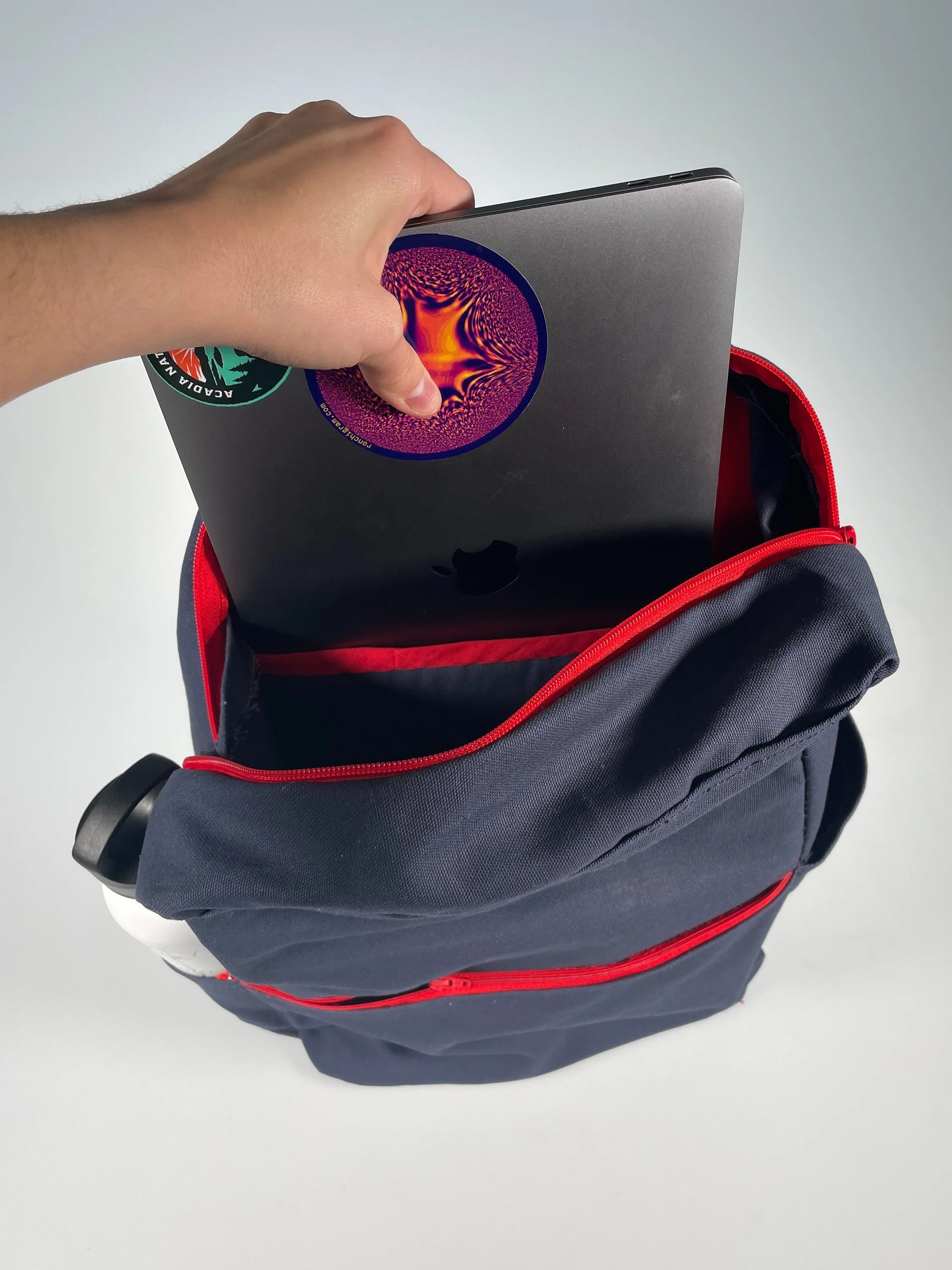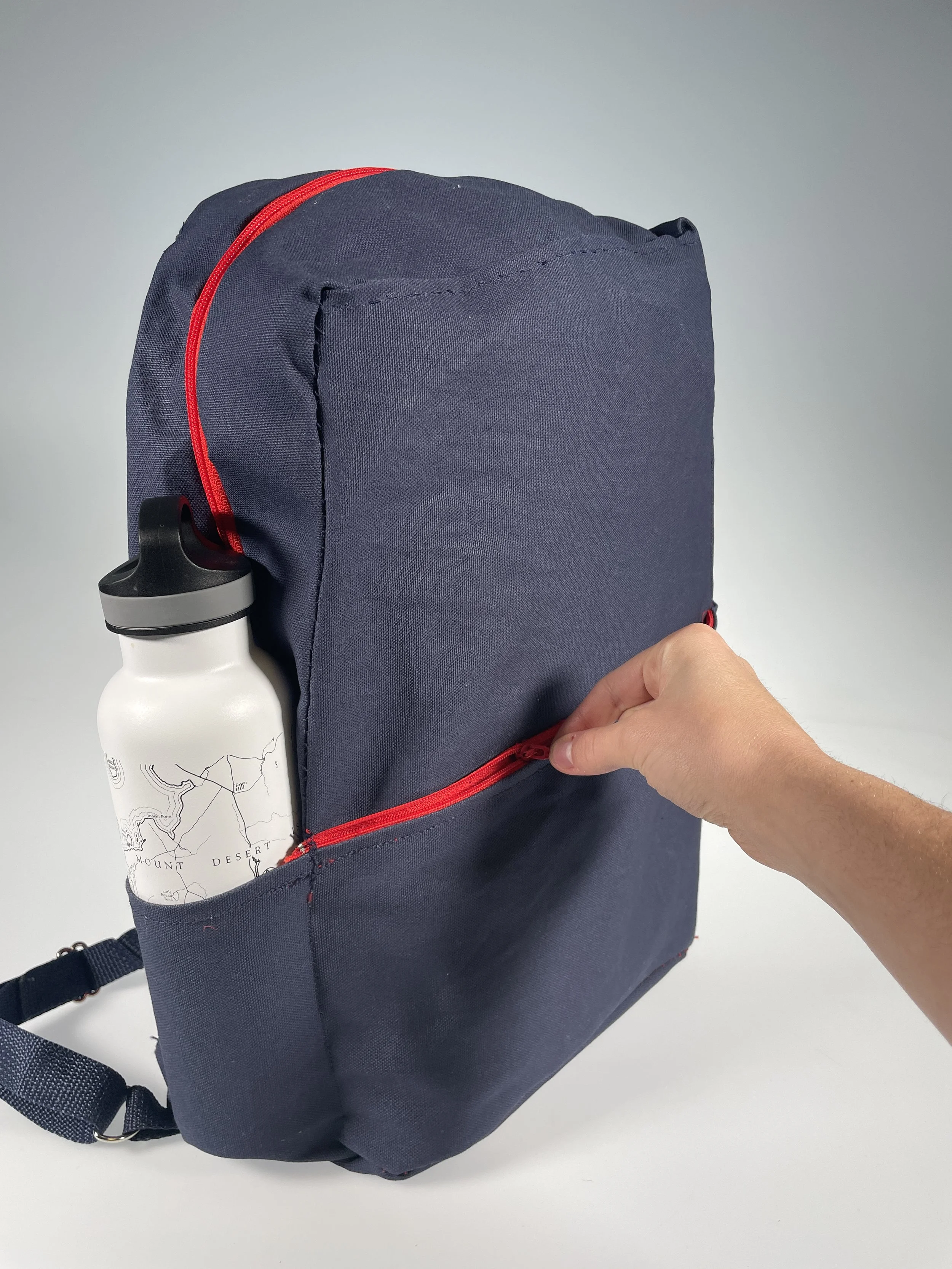SkyPack
The Skypack is an everyday bag designed to suit the needs of an average student. It features a spacious main pouch with built-in padded laptop sleeve, as well as an outside pocket for storage of small items. The external shape of the bag is simple, a subtle twist on a classic schoolbag through the use of asymmetry. The bag is navy blue with bright red accents, an abstract take on the first rays of sun piercing a night sky; fading stars are represented by silver accessories such as buckles and rings. All outer features like pockets and water bottle holders seamlessly transition into one another, as the bag’s exterior is made from a single fabric strip wrapping around itself in a spiral.
Inspiration and Ideation
I took inspiration from backpack designs such as the Hershel Classic Backpack XL (top left), STM Goods Myth Backpack (top right), and the LL Bean Mountain Classic Cordura Backpack (bottom left).
After many iterations of initial sketch ideation, I narrowed down my design to a wrap-around model, mostly fabricated from a single piece of wrapped cloth. I chose navy blue and red as the color palette to create a bag that was neutral with a contrast to add interest and excitement to the piece.
Design and Fabrication
Initially, I created a simple prototype bag out of linen to test the proportions. Though this bag did not follow my desired design, the mockup allowed me to adjust the overall dimensions and practice using a sewing machine before beginning construction of my final form. The final prototype was made from navy duck cloth and a red nylon lining fabric, created in two parts: Straps first, then overall construction and implementation.
Final Prototype and Critique
Though the overall form is solid and purposeful, the external decorative aspects seem a bit thrown together. Having silver accenting pieces on only one side of the bag feels overwhelming and unbalanced. Instead, omitting such a stand-out material contrast in favor of a plastic or anodized metal might make the piece more cohesive. Alternatively, silver accessories could be added to the front of the bag (perhaps in the form of zipper pulls) to even out the bag’s appearance. Another critique is the inconsistency of seam types, with hand-sewn and well-hidden seams juxtaposing one another.
